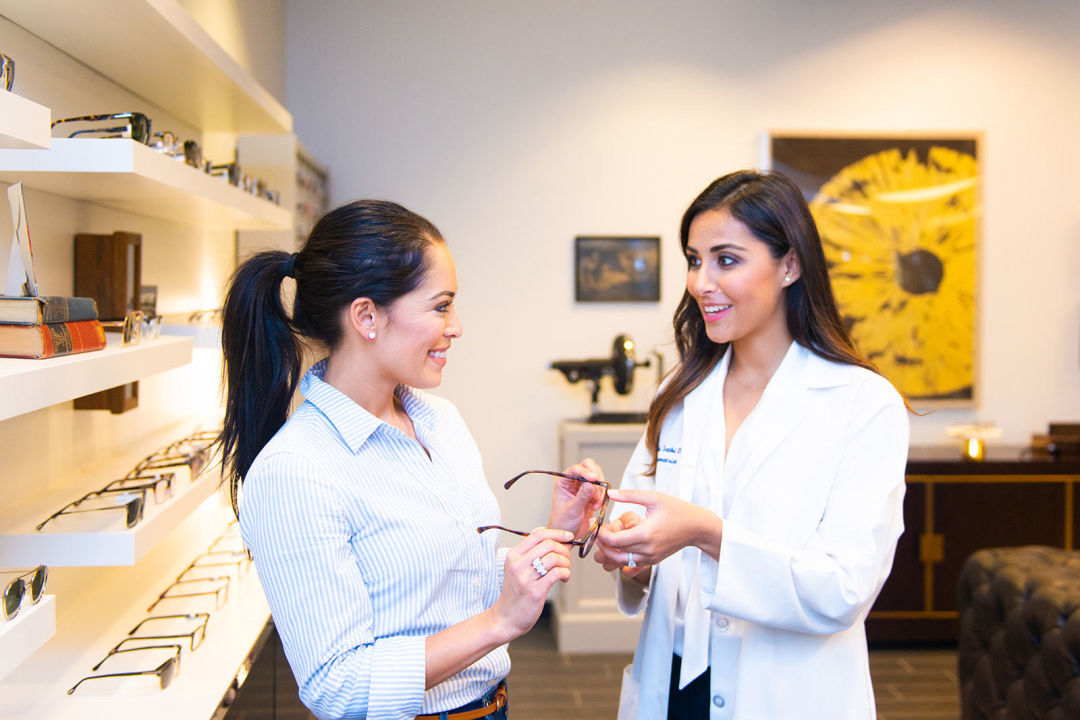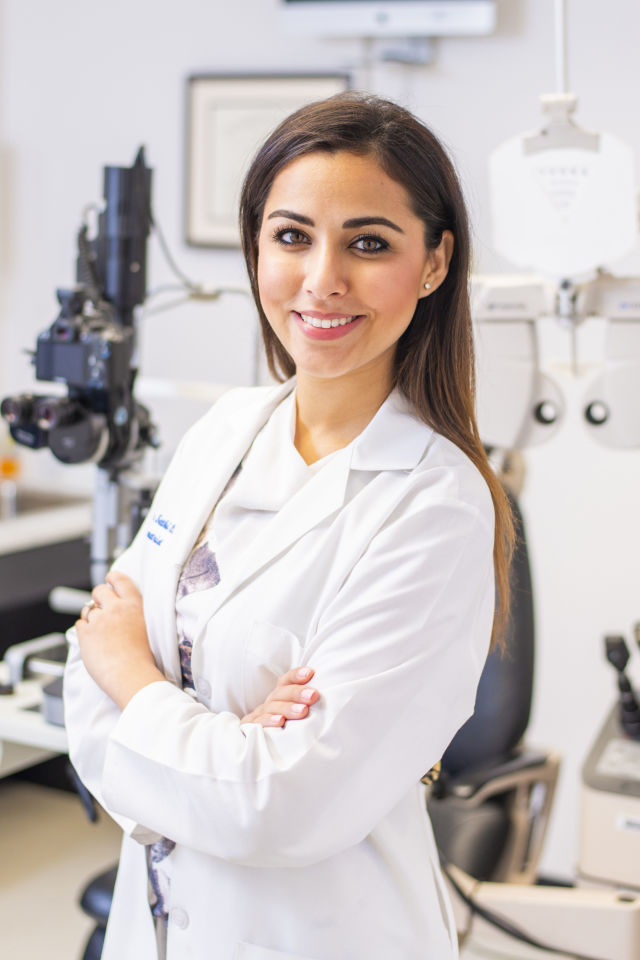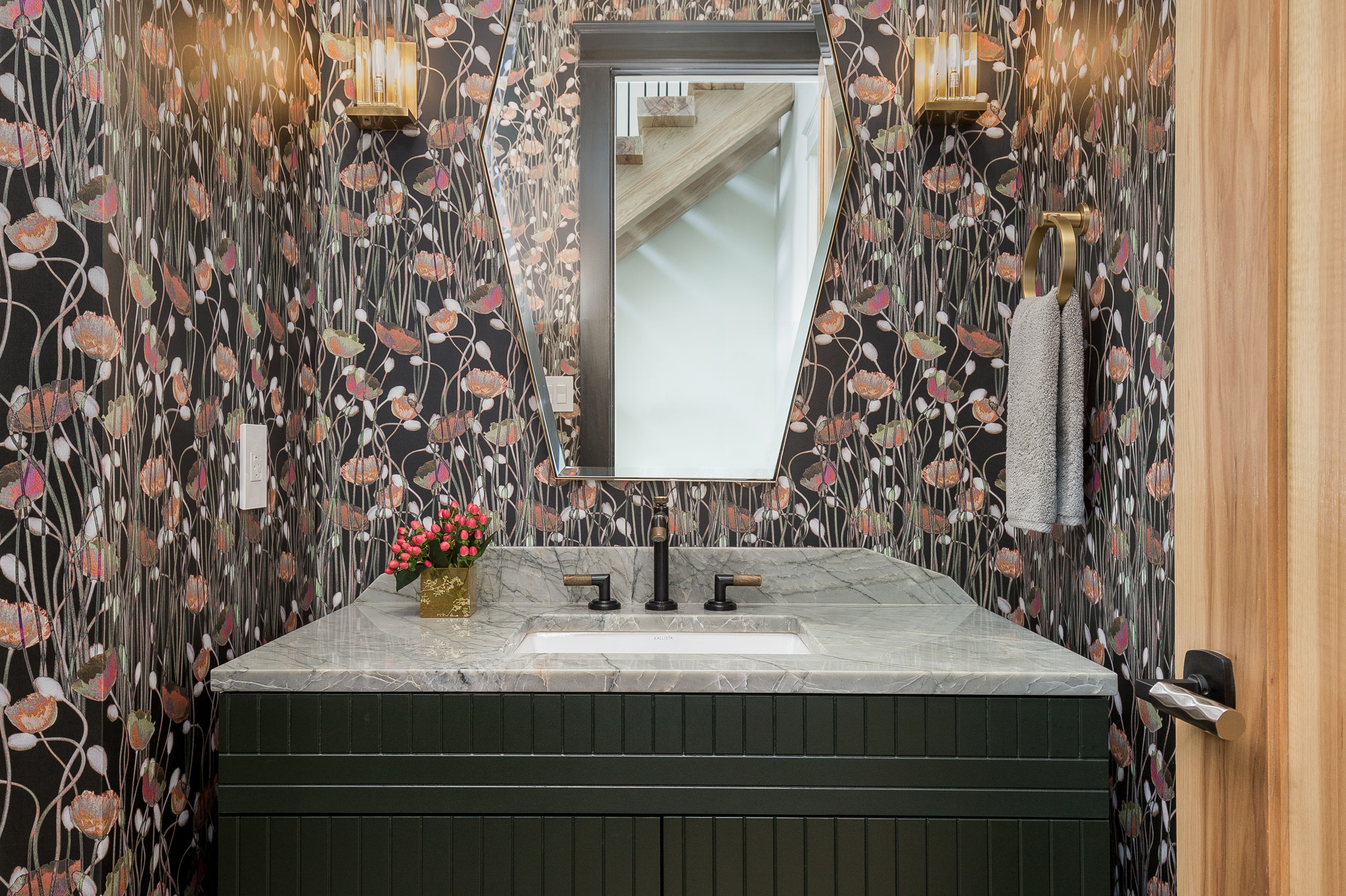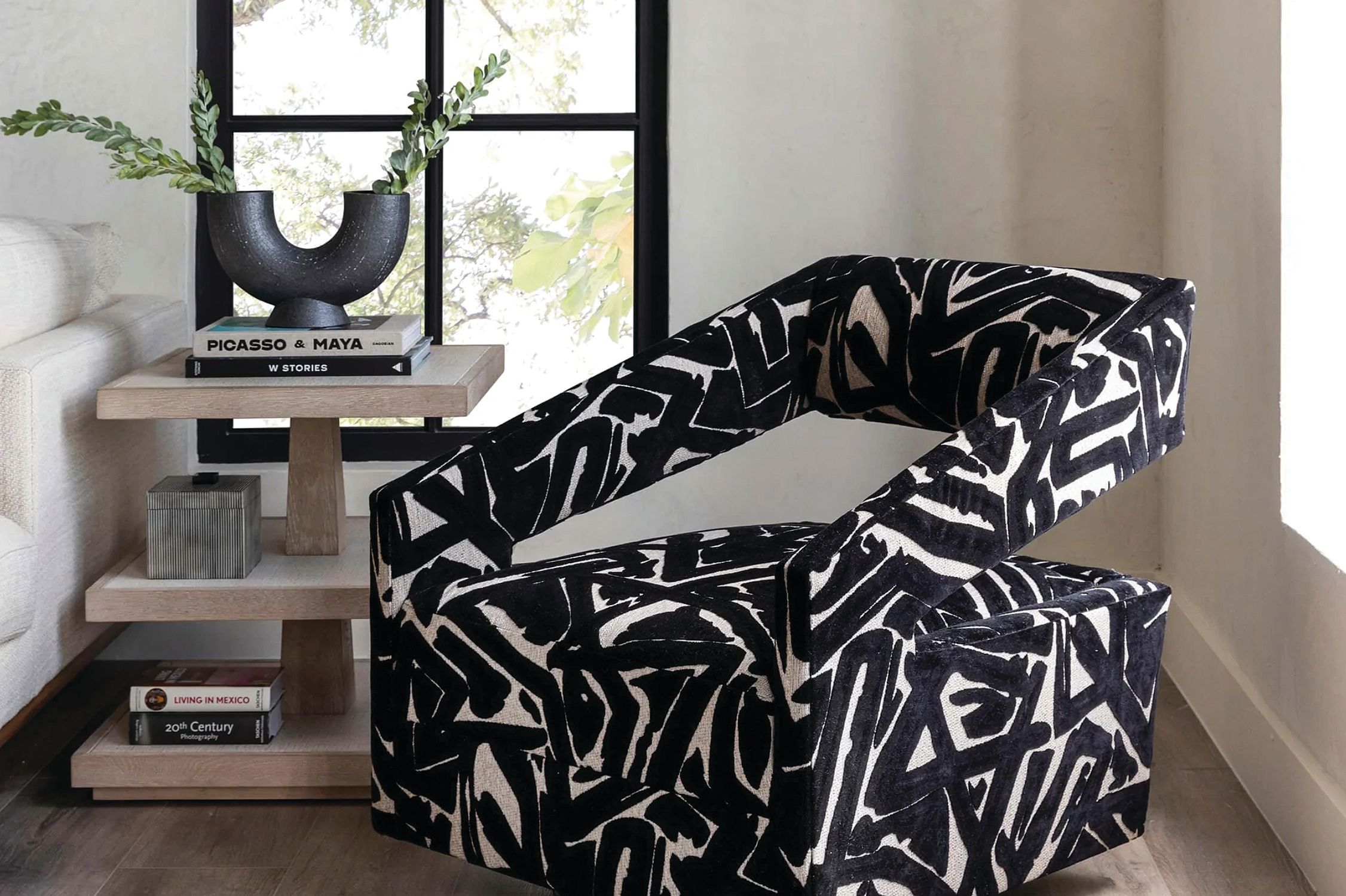This Optometrist Believes Luxury Frames Can Change Your Life

Dr. Sheekha Sethi helps a patient select eyewear.
Image: Christa Elyce Studio
I had eye surgery in second grade, and reading glasses followed shortly after. I recall my first optometrist as a very old man who wore tweed suits and seemed like an almost physical extension of the bizarre tools and machines he employed to measure my vision. He was qualified, of course, and respected in his field, but he didn't do much to inspire excitement. And he certainly never talked about which frames would most flatter my face.
"I think that's probably what most people think of," Dr. Sheekha Sethi says of my recollection.
Sethi, a beautiful, young eye doctor in downtown Houston, is the polar opposite of this mental image. A Chicago native, she went to Boston for optometry school and relocated to Dallas post-grad for her husband's job. The couple would frequently visit Houston, "and we loved it," Sethi says. When the opportunity arose to take over downtown's Cohen Eye Associates, a nearly 70-year-old practice, "it was almost a dream come true," Sethi goes on, "and I jumped on it."
The American Optometric Association reports 74 percent of practice owners are men, a perhaps unsurprising statistic in a field where women represented just 38 percent of the workforce in 2014. But their presence is only growing, and the AOA says 65–75 percent of today's optometry students are women, leading the Optometry Times to declare last spring that "the future of optometry belongs to women."

Dr. Sethi
Image: Christa Elyce Studio
Sethi is the (picturesque) face of that future. A former model, she's found a perhaps unexpected way to marry her two passions—science and design—in her work. "The field of optometry perfectly combines all those things," she says. "I feel like I've brought more attention to [aesthetics]."
She's done that through regular travels to cities like Milan and New York to personally curate her practice's impressive collection of luxury frames. Exposure to international brands with a deep commitment to craftsmanship has been "an eye-opener," Sethi says, no pun intended.
"You have this kind of old-school idea of optometry being just about getting eyeglasses and getting your contacts and that's it," she adds. "You can have fun with it at the same time. It doesn't have to be, do you want a pair of black glasses or do you want a pair of brown glasses?"
While she's dedicated to eye health first and foremost—she's adamant that visits to the optometrist are not just for ailing or aging eyes, and everyone can benefit from regular exams—it's clear Sethi really loves the fashion-forward side of her job. Choosing the right specs is all about "balancing your facial features and complimenting what you already have," she says.
And sometimes, it takes another person to show you what that means. Case in point: Sethi recently convinced a reluctant patient to try a pair of purple frames, revealing her eyes were not simply brown but hazel with specks of green. "I'm like, 'that's the natural color of your eye,'" she says. "They were just blending into the frames she was choosing in the past."
Sethi herself has "a drawer full of glasses" she pulls from based on her outfit for the day. A favorite brand, and one of her practice's most popular, is the Denmark-based Lindberg. "They are just the epitome of Danish design," she says. "Very discreet, kind of minimalist, but yet still stylish and very elegant. They have these classic, timeless shapes."
Speaking of shapes, vintage-style options like cat-eye and round frames are particularly en vogue, Sethi says. "But even though you have these vintage styles, the materials that they're made from are very modern. People are going away from these bulkier frames and going into more modern, lighter materials that make them a lot more lightweight and durable."
Customization "is one of the biggest eyewear trends," Sethi says, noting patients can dictate their glasses be made from buffalo horn or 18-karat solid white gold. Some frames even have diamonds. "People want to be able to pick every single part of their glasses, from the color to the shape to what goes on the side of the temples."
More than anything, though, patients are looking for quality in an age of fast fashion and proliferating e-commerce sites Sethi believes are "diluting the eye care industry in a way." Mail-order frame shops may be convenient, but nothing compares to the personalized process.
"It's important to understand a good pair of glasses can definitely positively impact a person's life. You have something that looks good on your face, and it boosts your confidence," Sethi says. "That feeling when your patient picks up a frame, they put it on, they smile, and they look better than they've ever looked—that's what makes me happy."




